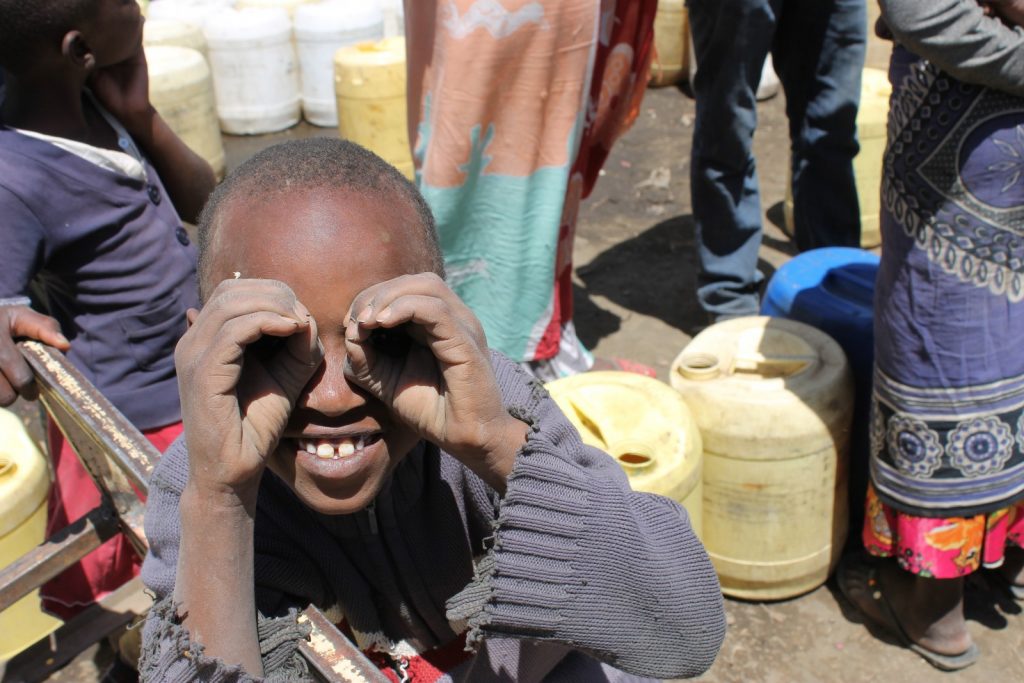If you have been regularly following our blog for this (almost) past year, you may have noticed that the field of natural hazards is coloured by many different shades. One more that I would like to present to you today is about how the natural environment can affect human health.
It is a recognized fact that geo-materials can pose a threat to our health. One of the most striking examples is asbestos fibres, used industrially in large scale since the mid-19th century until discovered potentially harmful and finally declared carcinogenic. The field of research that addresses this interesting subject is medical geology, and to discover a bit more about it I interviewed Dr Ines Tomašek.

Dr. Ines Tomašek
Ines, a former PhD student at Durham University in the frame of the MSC ITN VERTIGO, is currently a post-doc at Vrije Universiteit Brussel (VUB) and part of the International Medical Geology Association (IMGA). Her research focuses on the effect of volcanic eruptions on environmental and human health.
Hi Ines and thank you for accepting to be interviewed for the blog. Can you tell us a bit more about the field of medical geology? What is it and what are its goals?
As you have mentioned, the influence of environmental factors, such as exposure to toxic metals on human (and animal) health has been long recognized (even for thousands of years). The adverse effects to our health may arise from the poor air, water and/or soil quality as a result of contamination. Medical geology deals with the impact of geological materials and processes on animal and human health. It aims to link natural geo-environmental factors and events (such as dust storms, earthquakes and volcanic eruptions) with the incidence and geographical distribution of population health problems. Medical geology is not a new field, but it has been termed as such in 1997 and has been receiving growing interest and recognition ever since.
The adverse effects to our health may arise from the poor air, water and/or soil quality as a result of contamination.
It appears to me that medical geology is a very interdisciplinary field, what are the main challenges?
The main challenge lies in the fact that the subject is broad and requires an interdisciplinary contribution from different scientific fields. For example, overlapping health information with geochemical data can potentially help us to identify the local occurrence of a particular type of disease. Thus, to successfully tackle complex environmental health problems, geoscientists need to use their skills and tools in a way that will complement the expertise and tools of medical professionals and environmental scientists. Another challenge, though, is that the collaboration and communication between different groups are often limited.
What is IMGA?
The International Medical Geology Association is an association gathering scientists working across diverse disciplines including geoscientists, medical scientists, epidemiologists and toxicologists, from all around the world. The primary goal of the IMGA is to promote awareness concerning medical geology issues among different specialists, but also the general public. It has been established in 2004, and by this day numbers 27 local Chapters (i.e., groups) within individual countries that facilitate the growth of Medical Geology. Twice a year, IMGA publishes a newsletter with the information about all the activities that members are performing worldwide on the latest advances on Medical Geology education, research and meetings.

Part of Ines’s current work deals with the environmental health issues in the area around Meru volcano in the Arusha region, Tanzania. People in this region are seriously affected by dental and skeletal fluorosis, which occurs as a consequence of drinking water containing levels of fluoride beyond acceptable limits for consumption (>1.5 mg/L). In addition, the respiratory health of inhabitants of areas around Meru, but also Oldoinyo Lengai volcano is potentially affected by volcanic dust re-mobilisation, especially during the dry season. Photo credit: Ines Tomašek.
What made you decide to get into this field?
A decade ago, I graduated from the Zagreb Health School (Croatia) as a Medical Laboratory Technician. The same year, 2008, I began my undergraduate study at the University of Zagreb, Faculty of Mining, Geology and Petroleum Engineering, enrolling in Geological Engineering. During my studies, and especially after hearing about it for the first time in 2010, I developed a keen interest in Medical Geology. I saw it as an excellent research area where I could combine the knowledge and skills of both disciplines I’ve been educated in. That’s when I (finally) knew what I wanted to do when I grow up.
I started off my ‘medgeo’ career by investigating the impact of mining activities and mine waste in Namibia on the environment and human health for my MSc thesis. This work has made me even more passionate about the discipline seeing how my research and findings may be beneficial for impacted society. I was thrilled when in 2014 I got the opportunity to stay in the field and study for a PhD at Durham University.
I saw it as an excellent research area where I could combine the knowledge and skills of both disciplines I’ve been educated in. That’s when I (finally) knew what I wanted to do when I grow up.
Your current research focuses on how volcanic eruptions can affect health and the environment. Can you tell us shortly in which way volcanoes can affect human health? And can they affect animal health too?
Volcanic eruptions can have diverse effects on human and animal health, depending on the type of activity and material produced during an eruption, and the distance from a volcano. The hazards in the proximal areas of a volcano include contact with pyroclastic flows, lahars (mudflows), lava flows, gas emissions and damage to buildings (e.g., roof collapse) due to the ejected material. Volcanic ash is the main hazard for distal areas, as it may cause short-term respiratory issues (exacerbation of pre-existing respiratory diseases such as asthma), eye and skin irritation, but also a psychological distress. Other, indirect effects include deterioration of water quality, crop damages, and the destruction of vegetation. Furthermore, eruptions introduce vast amounts of elements into the environment, some of which are considered to be harmful such as arsenic, cadmium, mercury, lead, radon and uranium.
The general recommendation is to reduce the exposure to volcanic ash, and to do so by staying indoors or, if outdoors, to wear respiratory protection (e.g., a facemask)
Is there any recommendation on what to do in the case of a large explosive eruption and consequent ashfall on inhabited areas?
The general recommendation is to reduce the exposure to volcanic ash, and to do so by staying indoors or, if outdoors, to wear respiratory protection (e.g., a facemask). Wearing appropriate protection is also important during the ash clean-up activities. Plenty of information on volcanic ash hazards and impacts as well as the advice on protection during an ashfall is readily available on the website of the International Volcanic Health Hazard Network (IVHHN).
